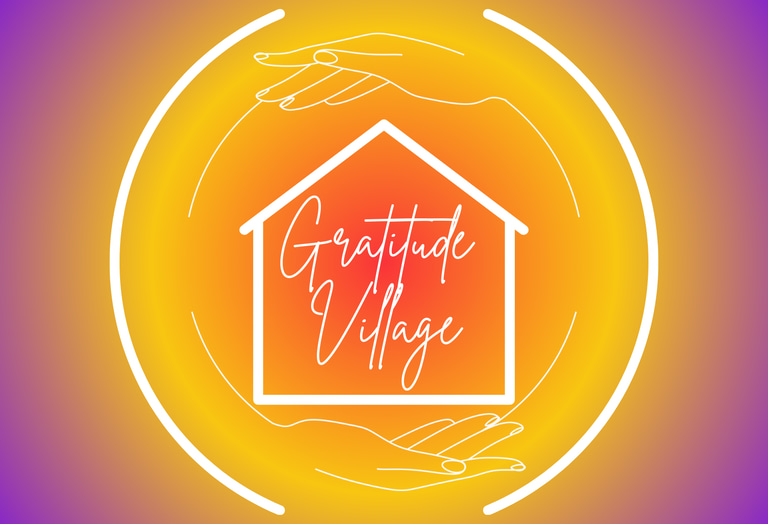Join our next Information Session via Zoom November 18 from 5-6pm MST
Safety in a Cohousing Community: Creating a Secure Haven for All
In today’s world, safety is often a top priority for individuals and families choosing where to live. While many traditional neighborhoods offer security measures like gated entrances or neighborhood watch programs, cohousing communities take a more holistic approach to ensuring safety—one that is deeply embedded in the social fabric of the community itself. In cohousing developments like Gratitude Village, safety isn’t just a feature; it’s a natural outcome of the design and philosophy that prioritizes human connection, shared responsibility, and thoughtful planning.
Gratitude Village
2/5/20253 min read


Safety in a Cohousing Community: Creating a Secure Haven for All
In today’s world, safety is often a top priority for individuals and families choosing where to live. While many traditional neighborhoods offer security measures like gated entrances or neighborhood watch programs, cohousing communities take a more holistic approach to ensuring safety—one that is deeply embedded in the social fabric of the community itself. In cohousing developments like Gratitude Village, safety isn’t just a feature; it’s a natural outcome of the design and philosophy that prioritizes human connection, shared responsibility, and thoughtful planning.
Kids Playing Freely with Confidence
One of the most beautiful and liberating aspects of cohousing is the ability for children to play freely and explore their surroundings without the constant concern of traffic or isolation. In Gratitude Village, for example, homes are arranged to encourage communal living, and the placement of shared spaces, like playgrounds and gardens, allows children to roam safely within view of their homes. Cars are limited to the periphery of the development, meaning that the central areas where kids run, bike, and play are free from the typical hazards of speeding vehicles.
This layout fosters a sense of freedom for children to engage in active, outdoor play—whether they're riding bikes, climbing trees, or playing games in the shared spaces—while parents can relax knowing that the car-free zones are secure. Instead of worrying about traffic, kids can focus on having fun, while adults have peace of mind.
Many Hands, Many Eyes: Collective Care
What truly sets cohousing apart from traditional neighborhoods is the deep sense of collective care. In a community like Gratitude Village, everyone is invested in the well-being of each other. This means that when children are outside playing or community members are walking around, there are always multiple sets of eyes watching out for one another. It’s not surveillance in the conventional sense, but rather an organic form of neighborhood care that develops when people know and trust each other.
This collective awareness extends beyond just the kids—it applies to the entire community. Residents look out for one another’s homes, pets, and well-being. This shared responsibility makes everyone feel secure, knowing that their neighbors are always ready to step in if something seems amiss.
Intentional Design for Peace of Mind
In Gratitude Village and similar cohousing communities, safety isn’t an afterthought but a key consideration in the planning process. Cars are purposefully kept to the edges of the community, which not only reduces the risk of accidents but also promotes walkability and interaction among residents. The design creates a pedestrian-friendly environment, where people are encouraged to move about on foot or by bike, further reducing the potential for accidents and enhancing the sense of connection.
Additionally, shared spaces are designed with visibility and accessibility in mind. Common areas like gardens, play spaces, and walkways are positioned so they’re always in view of homes, giving residents a clear line of sight to ensure everyone’s safety. Whether you’re working in the garden, reading in the common house, or just taking a stroll, you’re always in a space where others are present.
Safety Through Community Trust
In a cohousing development like Gratitude Village, safety doesn’t rely solely on physical infrastructure—it’s built on trust. Knowing your neighbors deeply, building connections, and collaborating on community decisions create an environment where everyone feels responsible for each other. This shared trust contributes to an unparalleled sense of security, where everyone is more than just a resident—they’re an integral part of the community’s well-being.
Ultimately, cohousing communities like Gratitude Village offer a model of living where safety is naturally integrated into everyday life. Through thoughtful design, collective care, and the prioritization of relationships, these communities provide a secure and supportive environment for everyone, from children playing freely to adults enjoying a peaceful, engaged lifestyle.
In a world where safety can often feel like an elusive goal, cohousing offers an inspiring solution—one that is as much about the connections we build as it is about the physical spaces we inhabit.
COMMUNITY
Join us in embracing nature, diversity and connection.
Sustainability
DIVERSITY
info@gratitudevillageco.com
720-689-4821
© 2025. All rights reserved.
AFFORDABILITY
Gratitude Village Inc. is a 501(c)3 charitable corporation that values diversity, equity, and inclusion as essential to our mission
Subscribe to our Substack
Refund Policy




Gratitude Village is a Proud Member of these organizations
